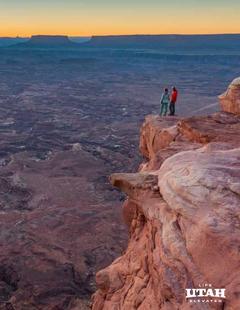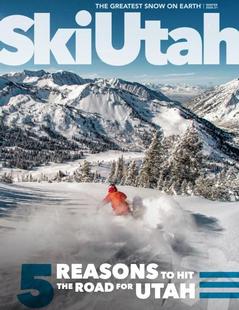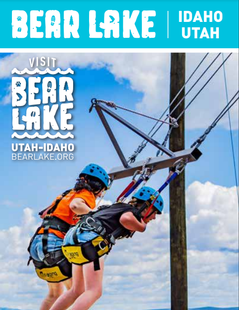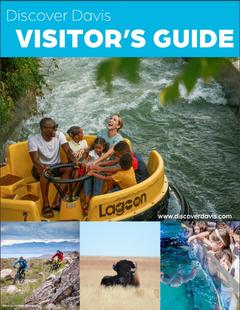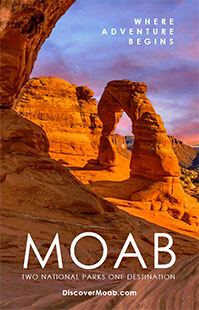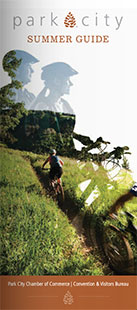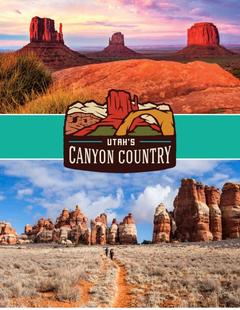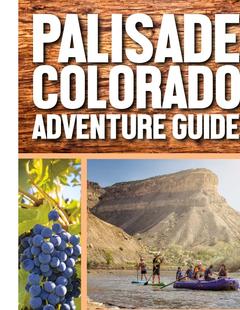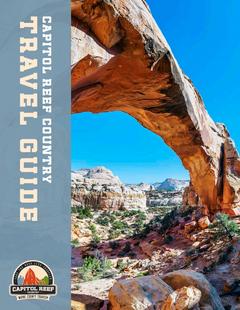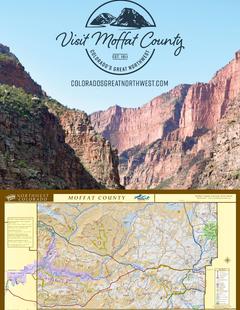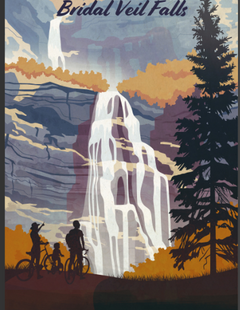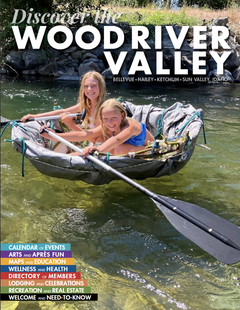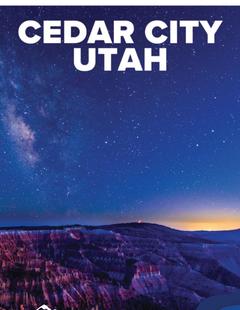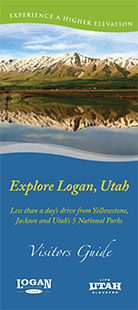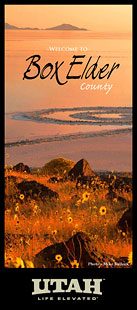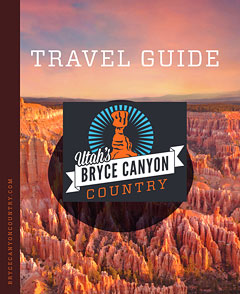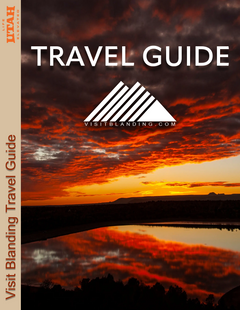Basics
- Location:
- High Uintas Wilderness Area, near Duchesne
- Length:
- 33.5 mile loop
- Difficulty:
- Intermediate
- Time:
- 4 days
- Elevation Range:
- 8200 feet to 11200 feet
- Elevation Change:
- 3000 feet
- Season:
- Midsummer to mid-fall.
Description
This hike is perfect for fishing enthusiasts looking for an extended trip into a high alpine wilderness area. The trail passes by no fewer than nine good fishing lakes, with short side trips leading to at least ten more. The route circles Brown Duck Mountain (11,866 ft.), passing through Brown Duck Basin, East Basin, and Squaw Basin, and features many fine views of the mountain’s rocky peaks and cold, clear lakes. Most of the lakes lie at elevations of around 10,400 feet. The highest point is at the top of Cleveland Pass where the trail climbs out of East Basin and drops down into Squaw Basin. Cleveland Lake, frozen most of the year, lies near the top of the pass at an elevation of 11,172 feet.
Brown Duck Mountain is a favorite destination for horseback riders, so if you are put off by piles of horse manure along the trail and in the meadows then this is not the best hike for you. The most popular location for campers with pack animals is East Basin (day 2), a lush, green area with gorgeous meadows and a half dozen small lakes. It is not unusual to see twenty or thirty horses and mules grazing in the meadows beside the East Basin lakes. Fortunately there are other off-trail places to camp in the basin that are just as pretty, but without the livestock.
Some content provided by www.utahtrails.com.
Details
Location:
Length:
Difficulty:
Time:
Elevation Range:
Elevation Change:
Season:
Additional Details:
As explained earlier, the easiest place to begin this hike is the lakeshore access parking area adjacent to the Moon Lake Campground. From there a small trail leads west along the side of the lake for 0.2 mile to the Lake Fork Trail. Soon after you reach the Lake Fork Trail you will see a small sign marking the beginning of the Brown Duck Trail on the left.
If you are starting from the official Lake Fork Trailhead, 0.8 miles down the road from the campground, you will see another sign directing you along an old jeep road that eventually meets the Brown Duck Trail higher up the mountain. Don’t take this route. You will do better to follow the Lake Fork Trail in a direction parallel to the road for 0.8 mile, then turn left onto the Brown Duck Trail when you reach the trail junction just described. The hike along the jeep road is 0.2 mile further and the scenery is much less interesting.
The first 0.5 mile of the Brown Duck Trail, from where it leaves the shore of Moon Lake, is the steepest part of this entire hike. After making two long switch backs and climbing about 400 feet above the lake the trail settles down to a gradual incline that will continue for most of the first day. Initially the trail is immersed in a forest of lodgepole pine, but as you gain elevation you will see the trees gradually replaced with Engelmann spruce and subalpine fir, which seem to do better above 10,000 feet.
After 1.0 mile the trail merges with the old jeep road that originated at the Lake Fork Trailhead and follows it for another 1.3 miles. Then, almost immediately, the road ends and a foot trail begins. If you are observant you will see the tell-tale signs of mining activity above the end of the road-an indication of what the road was originally built for. Thank goodness the High Uintas is now a protected wilderness area, and prospecting is no longer allowed.
Just beyond the end of the jeep road the trail swings east to cross Slate Creek and soon afterward crosses the official boundary of the High Uintas Wilderness Area. From that point on the Brown Duck Trail never strays far from the south shore of Brown Duck Creek.
About a half hour after leaving the wilderness boundary you should see a trail junction marked by a small wooden sign nailed to a tree on the right. This is the beginning of the trail to Atwine Lake and you must leave the Brown Duck Trail here. You will have to cross the river at this point-the only place on the entire hike where you must get your feet wet. Be sure to find a good strong stick to help with the river crossing. The current is often strong, but it is seldom more than knee deep.
The Atwine Lake Trail is not nearly as well frequented as the Brown Duck Trail; consequently it may be difficult to follow in places. Basically it heads uphill for a half mile until it reaches the rocky base of Round Mountain, and then turns northwest along more level terrain towards the lake. The trail passes by the north side of two small meadows before reaching the lake. Try not to make noise as you approach the meadows and you may be lucky enough to see an elk, deer, or moose. If there are any large grazing animals in the meadows they will usually be found along the perimeter near the edge of the forest.
The trail first reaches Atwine Lake on its northeastern shore, which is also the best place to make camp. If there are any other campers at Atwine they will probably be on the west side, near the better used trail to East Basin. Atwine is a large, relatively undisturbed lake with heavy timber growing right to the water’s edge. The lake has never been dammed and it appears to be in pristine condition. Furthermore, since there are no good pastures around the lake it is seldom used by campers with pack animals. Most visitors to Brown Duck Basin prefer to make camp at the better known Kidney, Island, Brown Duck, or Clements Lakes, but Atwine Lake is by far the prettiest of the basin’s five major lakes.
Day 2
From the trail junction on the northwest side of Atwine Lake continue northward towards East Basin. After only a half hour you will come to Clements Lake, a large lake about twice the size of Atwine with an earthen dam across its eastern side. Clements is a popular fishing lake, well stocked with cutthroat and brook trout, but it is not a particularly scenic lake. Like all dammed lakes its water level fluctuates with the seasons and the shoreline is marred by dead trees and mud flats. All of Brown Duck Basin eventually drains into Moon Lake Reservoir, an important reservoir used by the farmers of Duchesne County, and most of the Brown Duck Basin lakes have been dammed in order to increase the water storage capacity of Moon Lake. It is now illegal to build dams in a designated wilderness area, but these dams were built long before the 1984 creation of the High Uintas Wilderness Area.
1.3 miles beyond Clements Lake the trail climbs out of Brown Duck Basin, crosses East Basin Pass (10,630 ft.), and drops down again into the East Basin. The climb to the top of the pass is so gradual you will scarcely know you are going uphill. As you start down the other side, however, the trail gets much steeper and more rocky. Then, when you break out of the trees you will suddenly be confronted with a marvelous view of fifty square miles of Uintas wilderness. Cleveland Peak (12,584 ft.), the next day’s destination, is clearly visible four miles to the northwest, and beyond that is the long line of 12,000- and 13,000-foot peaks that form the Uinta Crest.
From the bottom of East Basin Pass it is an easy 3.4-mile walk to the center of East Basin. Along the way you will pass by a small meadow wedged between the trail and the steep rocky slopes of Brown Duck Mountain. The last time I was on this trail I saw a moose cow and her calf grazing in this meadow-they must have felt a sense of security knowing that their habitat was protected on at least one side by the mountain. I am sure the young moose calf would have made a tasty meal for a mountain lion.
Before starting up the slope towards Cleveland Pass the trail passes by the east side of an exceptionally pretty group of small lakes surrounded by the lush green East Basin Meadows. This area is a fine place to stop for the night, but unless you are very lucky you will probably find the meadows filled with pack horses and the best camp sites already occupied by their owners. As mentioned earlier, the East Basin area is an extremely popular destination among campers with pack animals.
If you crave solitude, don’t despair. Just 0.8 mile off the trail is a seldom visited lake that may be the prettiest spot in the entire Brown Duck Mountain loop. It is called Picture Lake, and it is well named because it lies in a setting that is truly picture perfect. The lake is surrounded by timber with a small, wooded island in the center, and it lies just below an 11,789 foot peak of Brown Duck Mountain. There is usually snow on the mountain until late in the summer, sometimes extending down the slopes almost to the water. Best of all, horses cannot easily get to the lake, and since it is not on the main trail you are likely to have the lake all to yourself.
Although there is no path leading to Picture Lake, it is only a twenty-minute walk from the main trail. Just follow the drainage uphill from the southwest side of the lower group of lakes. After skirting around the last meadow and climbing 130 feet you will cross a low ridge, just beyond which is the lake. Picture Lake is about 150 yards wide by 500 yards long, and it lies at an elevation of 10,731 feet. There are a few small but pleasant campsites along its northern shore. If you want to spend more time exploring the area there is another lake of similar size and elevation called Horseshoe Lake about 0.8 mile south of Picture Lake along the base of Brown Duck Mountain. I have never visited this lake, but it must also be very scenic. It lies directly north of the highest peak on Brown Duck Mountain. On the map it looks like an interesting cross-country hike would be to walk south from Picture Lake to Horseshoe lake, and then follow the drainage from the southern side of the lake back to the East Basin Trail.
Day 3
From East Basin Meadows the trail climbs north for another 1.5 miles to the top of Cleveland Pass , the highest point on the hike. There is a small lake near the summit of the pass, but the most notable point of interest is Cleveland Peak, just north of the pass.
When you descend from Cleveland Pass you will be following the Squaw Basin Trail which follows Squaw Basin Creek down the west side of the mountain. It is also possible to make another loop hike back to Moon Lake by continuing north from Cleveland Pass on the Ottoson Basin Trail. That trail eventually runs into the Lake Fork Trail which follows Lake Fork River back to Moon Lake. The hike described here is much more scenic, though. Once you drop into Lake Fork Canyon there isn’t much to see except tall trees.
2.1 miles after leaving Cleveland Pass you should see another sign where the Two Ponds Trail joins Squaw Basin Trail. If you want to make a side trip to Squaw Lake or do some exploring elsewhere in Squaw Basin you should keep to the right at this point and continue walking down the Squaw Basin Trail. Otherwise turn left at the junction onto the Two Ponds Trail. The Two Ponds Trail is basically a shortcut to the Brown Duck Basin. It is a relatively new trail and is not shown on most of the older maps, but it cuts about 2.2 miles off the total distance to Brown Duck Basin.
The Two Ponds Trail is about 2.0 miles long, ending when it reaches the trail to Tworoose Pass and Brown Duck Basin. Turn right when you reach the junction and proceed towards the pass, 2.2 miles away. Over the next 5.8 miles the Tworoose Pass Trail passes by no fewer than 6 lakes, so this is a good time to start thinking about where you plan to pitch camp for the night. In my opinion the best choices for a small group of backpackers are the first two lakes: Diamond and Rudolph. The short spur trail to Diamond Lake is 0.6 miles from the Two Ponds Trail junction. The trail is easy to see, but unfortunately there is no sign marking it. Just proceed along the Tworoose Pass Trail for about fifteen minutes and then start watching the right side of the path closely for the trail junction. The spur trail is about 0.3 mile long, and there are some small campsites near the north end of the lake. The trail to Rudolph Lake is 1.9 miles from the Two Ponds Trail junction, or 0.2 mile before you reach the top of Tworoose Pass. This short trail is marked by a small sign at the junction, but it is easy to miss so keep your eyes open. The trail to Rudolph Lake is 0.4 mile long.
Day 4
From Rudolph Lake to Moon Lake and the end of the hike is 10.6 miles, but it is nearly all downhill and should be easy walking. Almost the only part that is uphill is the 200-foot climb to get from Rudolph Lake to the top of Tworoose Pass.
Beyond Tworoose Pass the trail gradually descends into Brown Duck Basin, soon passing by Tworoose Lake. Tworoose Lake is not easily visible from the trail and there is no spur trail leading to it, but it isn’t difficult to reach. Just walk down the trail from the top of the pass for 15 minutes, then turn south and walk downhill through the woods for another 150 yards. From there you should be able to see Tworoose Lake.
The next lake the trail passes is Kidney Lake, quickly followed by Island Lake and Brown Duck Lake. All three of these lakes have been dammed and made into reservoirs; hence they are not as scenic as many of the other lakes on this hike. Like Clements Lake, the fluctuating water levels have left their shores marred with dead trees and lifeless, piles of bleached white rocks. Nevertheless, the lakes are well stocked with game fish and are very popular with campers. Leaving Brown Duck Lake the trail follows the south side of Brown Duck Creek for the last 6.4 miles before ending at Moon Lake.














